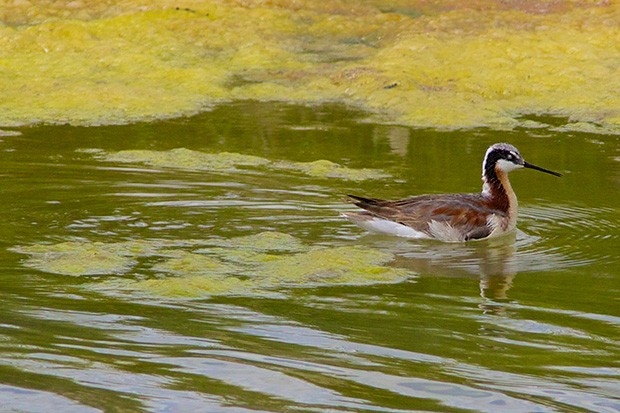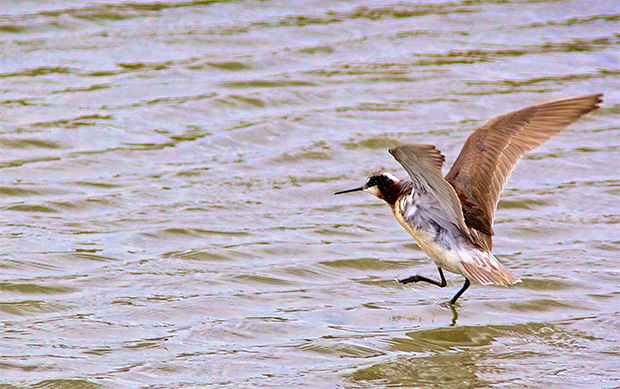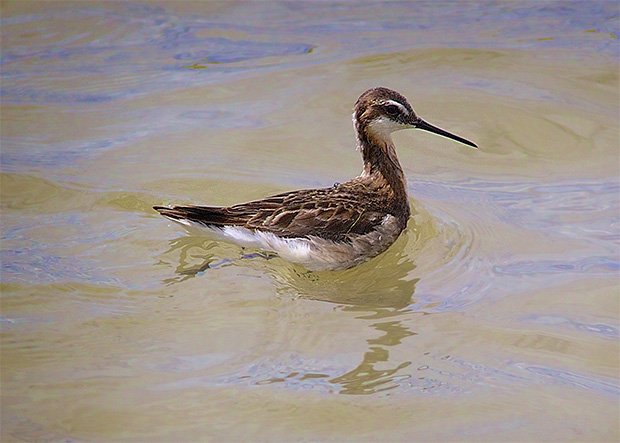Anyone who’s been birding for long discovers that if you stop for a while to watch a particular bird you’re likely to see other birds, too. That’s probably a corollary of the rule that the best way to bird is to sit in a good place and wait for the birds to come to you. I might even follow that advice if I didn’t have so many ADHD qualities. Of course, if I really liked to sit for long periods in one place I would probably still be fishing instead of taking wildlife photos.
Nevertheless, I discovered this beautiful Wilson’s Phalarope while taking a break from trying to photograph the Black Terns as they whipped by. I don’t see Wilson Phalaropes very often this side of the mountains so I was especially pleased to glimpse this one moving up and down the far side of the pond.

Of course, an even more basic birding axiom is that as soon as you point a lens at a bird it will fly away, no matter how indifferent it had seemed before doing so.

Not a problem, though, by then I was once again ready to focus on the challenge of capturing shots of the Black Terns. After another ten minutes or so of frantic shooting, I took another break and noticed that the Phalarope was on the near side of the pond, closer than it had been before it flew away.

It wasn’t until I started processing these photos that I realized this was not the original phalarope at all. In fact, I wondered if it was even a Wilson’s Phalarope since it lacked the bright markers I usually identify with Wilson’s Phalarope.
Ten minutes exploring the web revealed that this was, indeed, a Wilson’s Phalarope, a male Wilson’s Phalarope, one of the few species where the female has brighter plumage than the male. That made me wonder if the male incubated the eggs since that’s the primary reasons females usually have less colorful plumage. Sure enough, a little more online research showed that it is the male, not the female, that incubate the eggs.

I learn so much from you. I’ve never heard of a Phalarope before.
And, of course, I’d never heard of them until I took up birding a few years ago.